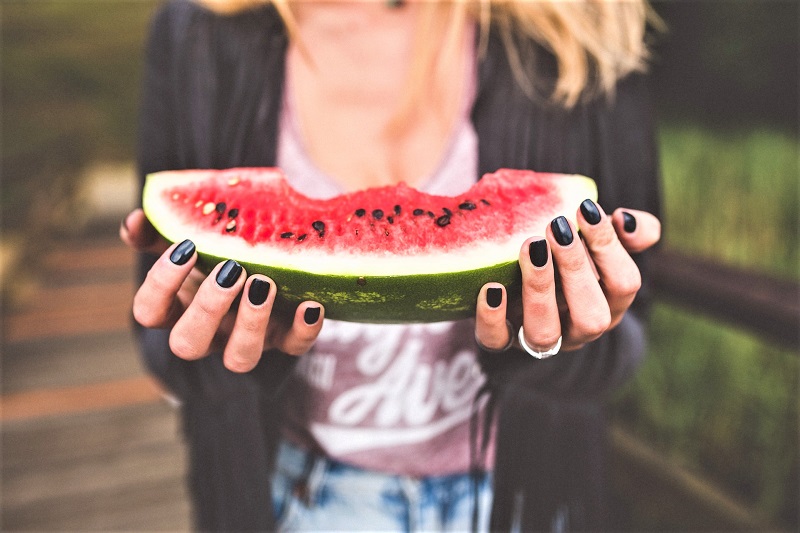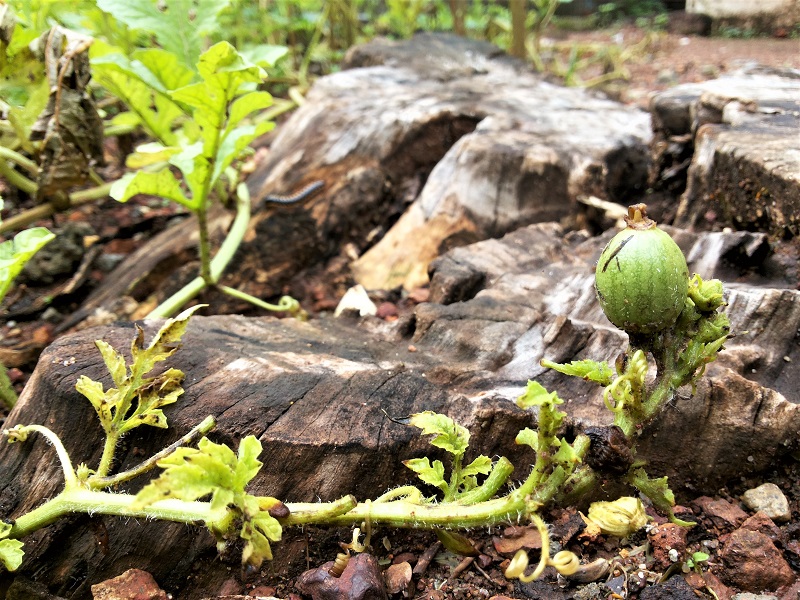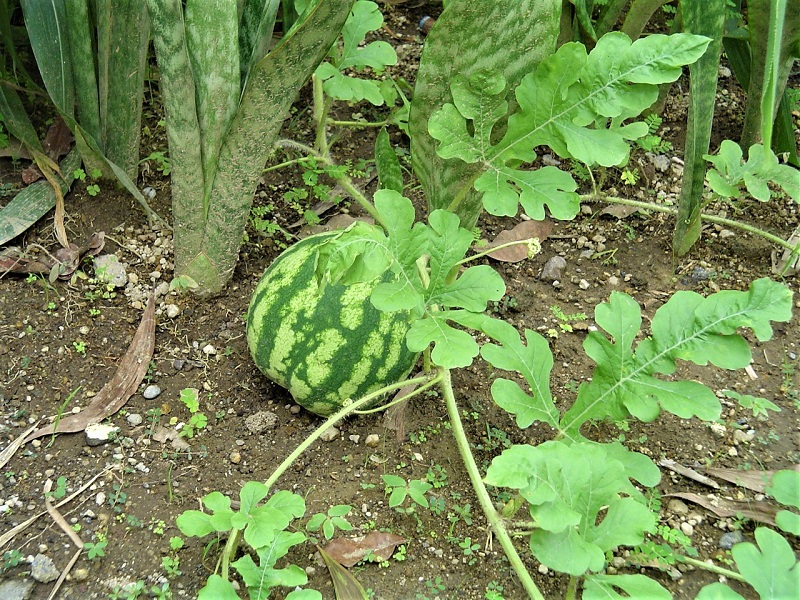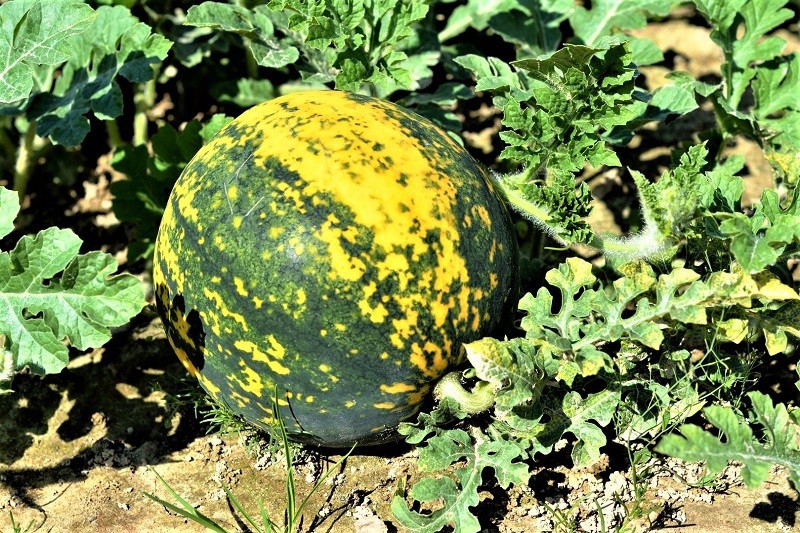They are one of the sweet things many of us remember about past summer campfires. They came after the clams, the corn, the barbecue, and the beer.
Sliced, cool, and dripping with sweetness, we ate them in the orange light of the fire as we kept the wood burning.
While we may have become familiar with them, for most people, watermelons seem to have no origin. They are just something that you know will be piled high in the grocery store throughout the summer. Fat, round, and green outside; sweet and deliciously juicy red inside.
Every day, tons and tons of them arrive in cities all over the world, fresh from the fields. They scatter to grocery stores, markets and warehouses, and then all clues of where they might have come from disappear.

Homegrown Summer Sweetness
Contents
We may have some vague notion that commercial watermelons are grown in farms, of course. But the fact is, you can grow watermelons in your backyard garden – if the growing conditions are right. The watermelon is actually a fun and very gratifying fruit to grow at home.
Thanks to hybridizing technologies, you will even find varieties that you can grow in smaller gardens, and also in large pots.
The watermelon’s vine-like plant has a creeping, scrambling disposition similar to that of other melons. The large leaves are held upright on succulent stalks and have an almost-prickly hairiness.
Beneath the leaves, you’ll find tendrils like those found on true climbers. If a watermelon encounters something as it grows, such as a rock or a small shrub, it will use these shoots to climb over the object. Other tendrils may head away up a nearby fence.

Growing Watermelons in Your Backyard
Watermelon demands warm temperatures – both in soil and in air. You should transplant or direct seed watermelon only when the average soil and daytime air temperatures are at least 21°C.
Do not grow watermelon unprotected where nighttime air temperatures drop below 16°C. If the air temperature gets too cold, you should protect your watermelons with floating row covers.
Grow watermelon in rich, well-draining soil. Planting watermelon on hills or mounds ensures that roots stay warm and that the soil is well drained.
To produce fruit, watermelon requires the presence of both male and female flowers. Sometimes a single plant will carry both, other times not.

How to Plant Watermelon
You’ll do well to amend the planting area with compost and well-rotted manure. Where you plan to sow seed or set transplants, dig a hole 30 centimeters deep and 30 centimeters wide.
Fill the hole with rich aged compost and manure mixed with several handfuls of sand. This will ensure that the growing spot will be both moisture retentive and well-draining.
Add a handful each of rock phosphate, earthworm castings, and Epsom salts. Use the soil removed from the hole to pile a mound on top and then rake it flat.
Sow seed or set a transplant there. To ensure good levels of pollination and fruiting, put at least two plants in the same hole. Watermelon roots commonly grow 20 to 25 centimeters or more deep.
Space watermelons 1.8 to 3.6 meters apart. This prevents the plants from competing for moisture and nutrients.

Caring for Your Watermelon Patch
Keep weeds down until the vines spread and shade the soil. If watermelons are stressed for water or nutrients when they start to set fruit. The fruit will be small and less flavorful.
Feed watermelons with a dilute solution of fish emulsion fertilizer. That’s one tablespoon per gallon of water weekly from the time the plant is a seedling until the first female flower appears.
Mark the calendar on the day the female flowers fully open. The fruit should be ready for harvest 35 days later.

Harvesting
The general consensus among experienced growers is to wait until the fruit is fully colored, then roll it over. If the area in contact with the ground is starting to yellow, then it is likely ripe.
You can also check for ripeness simply by tapping the melon. If you hear a deep, dull thump, the fruit is ripe. You should also find that the stem connecting the fruit starts to shrivel when the fruit is ripe.

The watermelon’s most common problem is powdery mildew. Some growers say regular applications of seaweed-based products will prevent this problem. Otherwise there are many safe and organic options for treatment.
Make sure you treat the problem as soon as you notice it, and treat the entire plant, even if the problem is only visible on one section.








